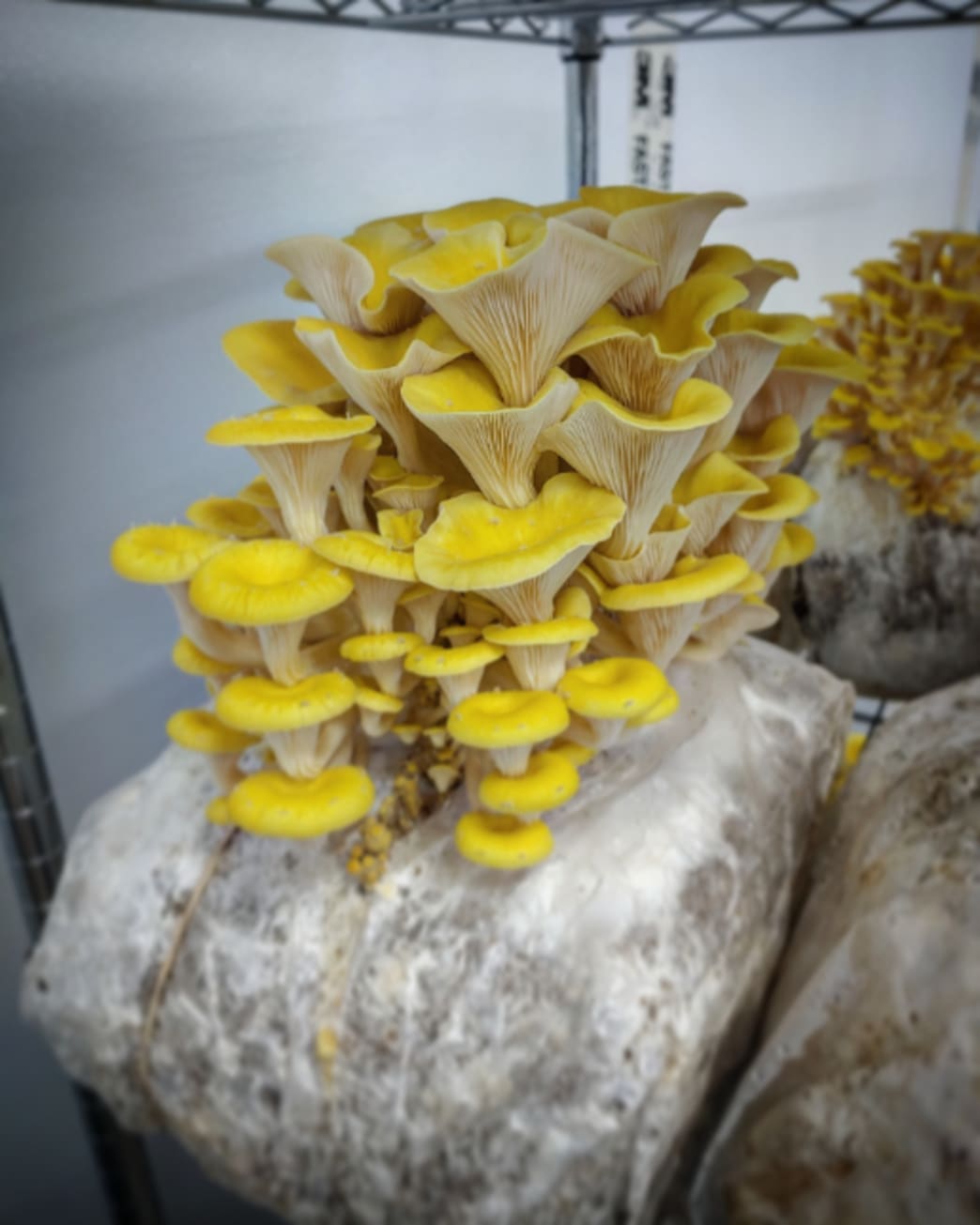Discover how to fruit mushrooms, including parameters for humidity, light, temperature, and CO2 levels. Also learn about making your own fruiting chamber!
When considering how to fruit mushrooms, you will first need lighting that is comfortable to read under. After initiation, we have our fruiting body development, and that can occur in a fruiting room, outdoors, or in a variety of different structures. Regardless of the area, there are four main parameters and spectrums to focus on. So of course there's variability in this depending on how many pounds of mushrooms you’re interested in fruiting, the types of mushrooms you're growing, your set up and how serious you are. You might have larger or narrower parameters.
How to fruit mushrooms: Humidity
Humidity is going to be anywhere from 75% to 90%, and particularly in the initiation phase, the first four days of fruiting, you want humidity closer to 90%. Just as they’re pinning they start to be a little bit more resilient to lower humidity levels, so you may be able to drop down to 80% or 75% and it won't have a huge impact.
How to fruit mushrooms: CO2
You will want to keep CO2 below 800 parts per million (ppm), particularly for oysters. With shiitakes and lion's mane you can have 1000-1100 parts per million because they are more tolerant of high CO2 levels.
How to fruit mushrooms: Temperature
An ideal temperature range is between 55 and 75 degrees Fahrenheit. The sweet spot is 62 or 63 degrees Fahrenheit. That's where you get the highest quality mushrooms and the fastest growth. Mushrooms grown at lower temperatures tend to be meatier and of a high quality as well, they just grow more slowly.
How to fruit mushrooms: Lighting
With lighting you will want to have the lights on for 16 hours and off for eight hours. I know people that do 24 hours on. There are also some people that do 12 hours on and 12 hours off. I found that to be a little bit too short as the mushrooms got a little bit stemmy. So I would say in the 14 hours or 16 hours on range for lighting is best. Also, there isn't really a particular spectrum that you need to include in lighting. LED lights can be enough.
How to fruit mushrooms with the use of an indoor fruiting room or chamber
The biggest advantage of an indoor mushroom fruiting room is that you can grow year-round, so you don't have to stop.
This is kind of your baseline budget, and the biggest thing is you're not controlling temperature here. If you did this in a basement, you wouldn't really need much temperature control. If you were doing it in something more like a warehouse or something similar, you might need a temperature control, which is additional money that what’s pictured here. This is a pretty basic list of materials, adding up to around $700, which can be used to grow 100 pounds of mushrooms a week.
We essentially did this in the basement of a residential house, and we basically had all those materials listed there. We didn't have heating or cooling. The air intake was passive at the front of the room and it exhausted out a window in the back of the room. We were able to grow around 150 pounds of fresh mushrooms each week here.
There's no drains in the floor so every couple of days we had to vacuum up water. The walls of the chamber are made of contractor plastic and 2” x 4” that we ripped in half. It’s a very basic set up.
Fruiting mushrooms in a 16’ x 8’ room
In our 16’ x 8’ room we were moving in about 96 bags each week. We were leaving those in for four weeks, and after the first 10 days we got about a pound per bag. That's a really good metric to estimate with. Getting one pound of fresh mushrooms per five-pound bag.
Then two weeks later we got about a half a pound off of those same bags. So we started with 96 pounds, and then as we get in the swing of things we have that additional 48 pounds coming in. Each week we were producing around 140.
There's also variability with yields. Sometimes the mushrooms are doing better and sometimes they are not doing as well. It's a constant dance of modifying the atmospheric conditions so that the mushrooms are fruiting well.
Do you want to take the leap into starting your own commercial mushroom farm business? Discover the entire process of starting your own small-scale mushroom farm for profit with our Online Commercial Mushroom Cultivation Course! Never has it been easier to learn how to grow mushrooms commercially, and with our help you will avoid all the pitfalls and headaches that can come with the process. This course can be taken at your convenience, and it includes a free consultation with Willie, the owner and head mushroom grower. Learn more and register now.

